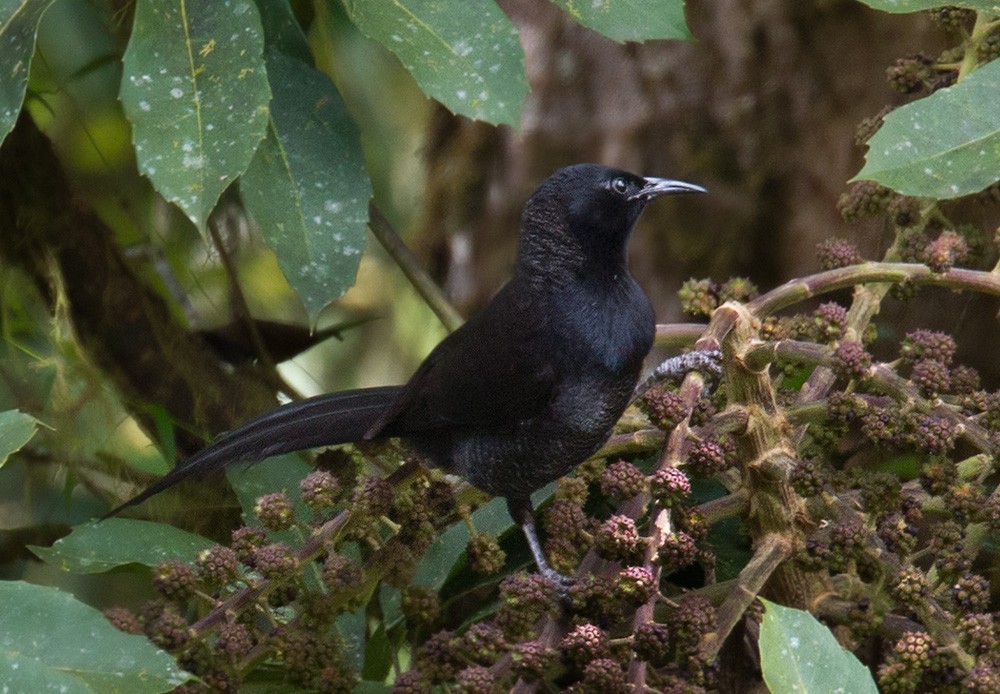Huon Astrapia
A species of Paradise magpies Scientific name : Astrapia rothschildi Genus : Paradise magpies
Huon Astrapia, A species of Paradise magpies
Botanical name: Astrapia rothschildi
Genus: Paradise magpies
Content
Description General Info
 Photo By Lars Petersson
Photo By Lars Petersson Description
This little-known astrapia is a medium-sized bird-of-paradise species, excluding the tail. The males reach up to around 69 cm (27 in) long and weighs up to 205g, including the tail, while the smaller female is around 47 cm (18.5 in) long and weighs slightly less at 200g. The males' head to breast are black with a velvety-blue iridescence, bordered by a characteristic iridescent, coppery-orange gorget-band; the hindneck is an elongated erectile cape with iridescent blue-green plate-like feathers, tipped pinkish-violet (cape may appear fully violet in some views.); upperparts, including wings, are black with a slight bronze-green sheen, underparts are a deep oily green, with larger, scale-like feathers down the sides a shiny lime-green; the impressively long tail feathers are purplish-black with a bluish sheen. The less-impressive females are mainly a dull brownish black, with slight, narrow pale barring ventrally; the upperparts are a lighter brown compared to the blackish head; and the tail is greatly shorter than the males' and generally similar in color, though drabbier and browner. It takes around 5-6 years to reach full adult plumage, like its congeners. 
Size
47 - 69 cm
Feeding Habits
A. rothschildi is known to feed on Pittosporum seeds and the fruits of the genus Schefflera and Freycinetia, as well as some animal matter, like skinks and possibly insects and arachnids, like nearly all of the Astrapia species. It tends to probe knotholes, pecking and tearing among moss and epiphytes while foraging. They spend most of their time in all levels of the forest, excluding the highest canopy, though mainly feeds in the lower levels. 
General Info
Behavior
Little is known of the Huon astrapia's behavior. 
Distribution Area
A. rothschildi is restricted to the Huon Peninsula of Papua New Guinea, in montane and subapline forests from 1,460-3,500 m. Their display sites are found ridge crests and forest edges. It is assumed as sedentary. 
Species Status
The Huon astrapia is considered as Least Concern, though as poorly-known as it is, it almost comes in into the Data-Deficient category. It is listed on Appendix II of CITES. It is not routinely hunted, though the skins and tail feathers of the males are important cultural items for the people of Nokopo. 

 Photo By Lars Petersson
Photo By Lars Petersson Scientific Classification
Phylum
Chordates Class
Birds Order
Perching birds Family
Birds-of-paradise Genus
Paradise magpies Species
Huon Astrapia